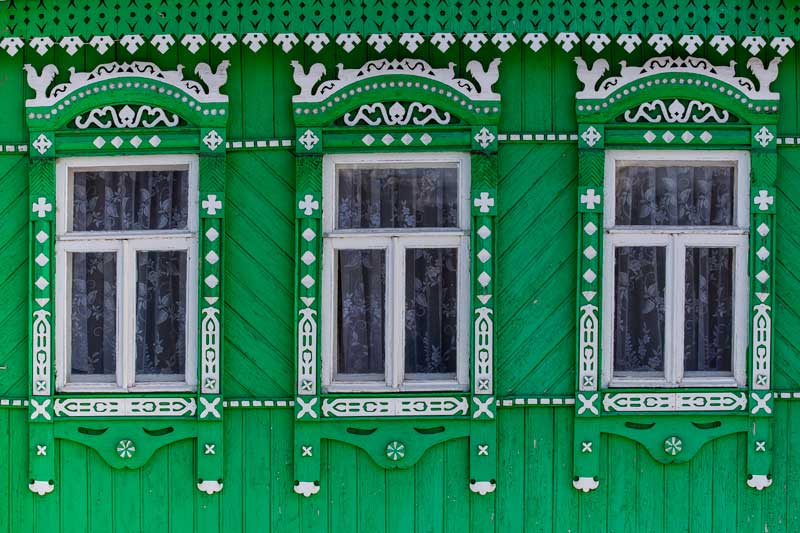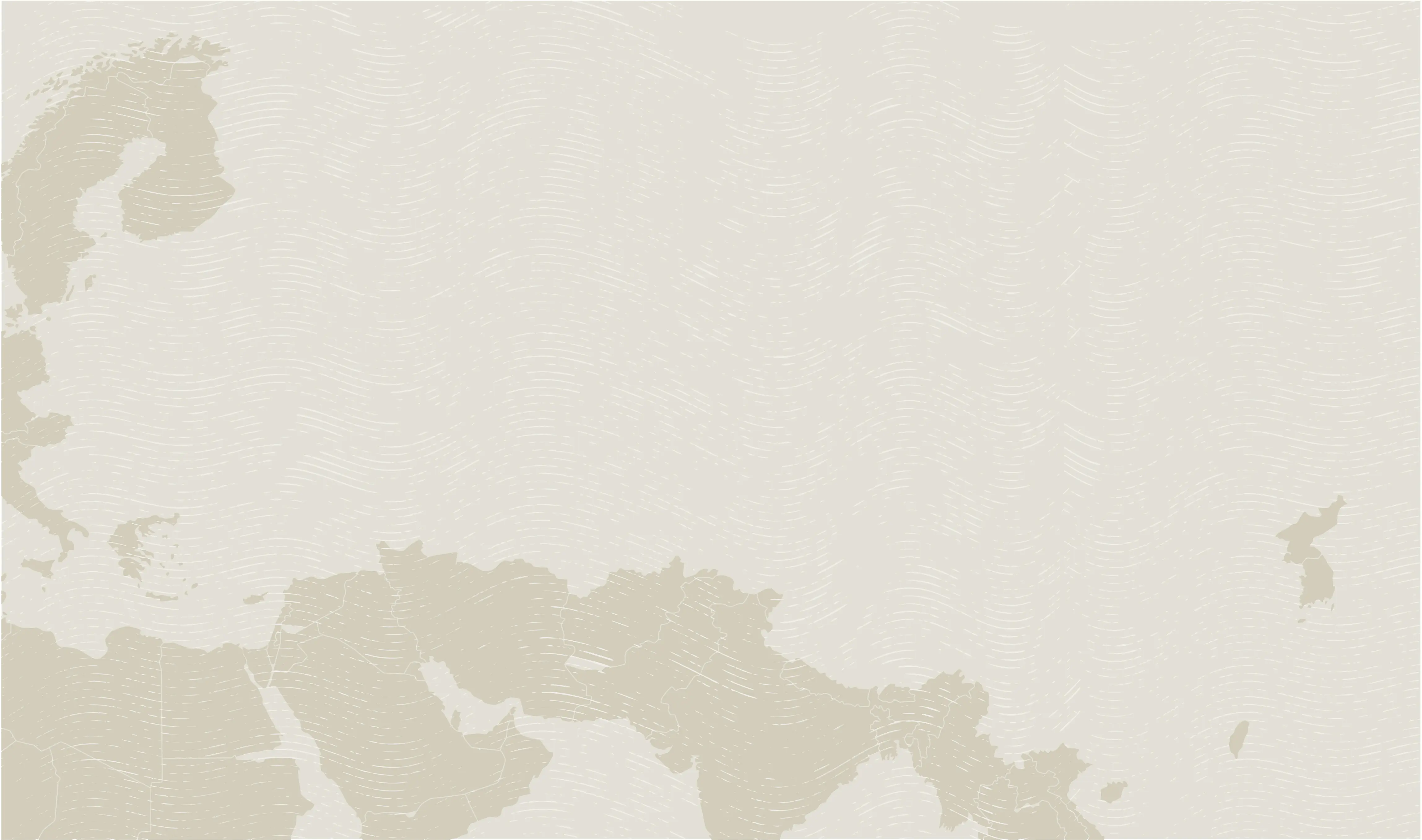Photo credit: Abdu Samadov
Field Notes from MIR Tour Managers Reporting in from St. Petersburg to Samarkand
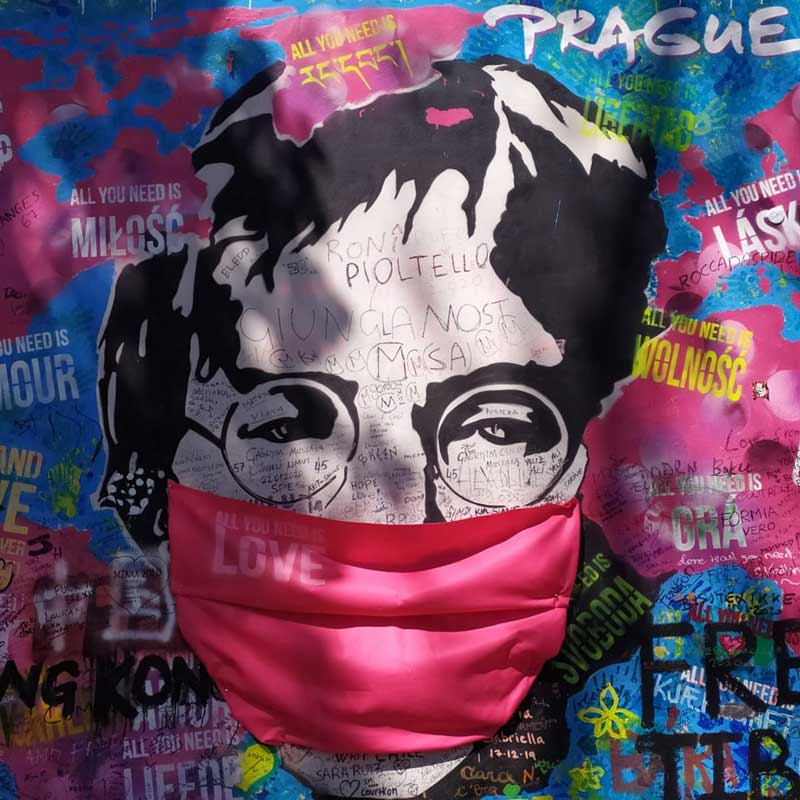
For 35 years, MIR, whose name means peace and world in Russian, has had a singular purpose: connecting people through travel in destinations farther from the familiar. Our last dispatch included field notes from partners and staff in Western Russia, Turkmenistan, and Georgia actively making the most of challenging times.
In this edition, we feature profiles from some of our tour managers who are reporting in from Central Europe to Central Asia on how they are staying well and wisely spending their time while temporarily off tour manager duty.
We hope you enjoy learning about how four MIR tour managers, hailing from Prague, Samarkand, Amsterdam and St. Petersburg, are spending their time until they can get back to what they love most – travel.
Michel Behar
Hails from: Amsterdam, The Netherlands
The inquisitive traveler – always brushing up on the academics
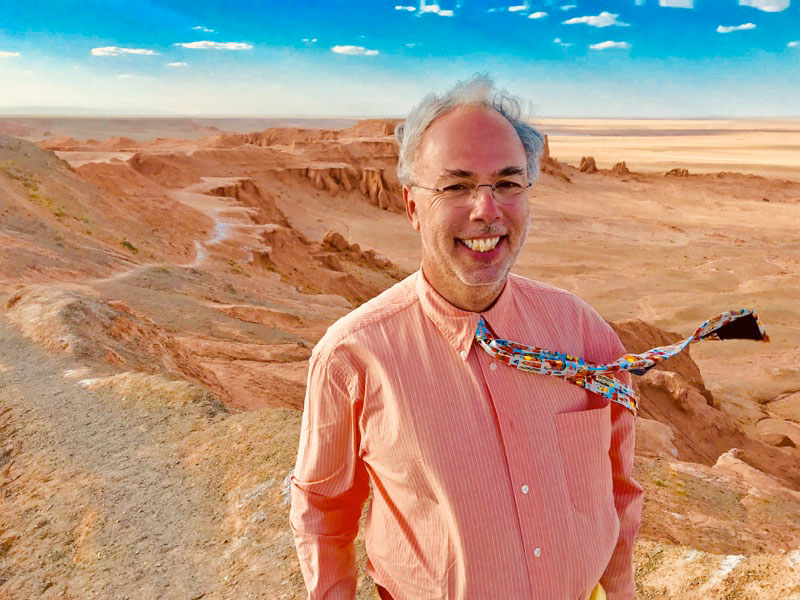
From his home base in Amsterdam, Michel is taking advantage of his time off from leading trips by catching up on reading and getting out for an occasional hike. He’s dug in to his large stack of Silk Road material and one of his latest conquests was taking on Foreign Devils on the Silk Road by Peter Hopkirk. Michel says: “I find it completely amazing how Romans thought silk, a material ‘as light as a cloud’ and ‘translucent as ice’ grew on trees.”
(click image to view larger photo)
“I’m also studying the revived Silk Road and the called “The String of Pearls” – a defense belt around China – stretching from Mongolia, Siberia and the 5 ‘Stans to Piraeus, Greece, gateway to Balkans and Europe, and deep sea navy ports and other infrastructure in Djibouti, Myanmar, Pakistan and Sri Lanka. Some of those trade routes are over 2000 years old, the Romans for instance imported goods from south-East Asia via Djibouti and India. The trade route from China via Persia and the Near East to Europe is over 2000 years old as well. This entire territory is the focus of my imagination and forms the centerpiece of most of my travels. I can’t get enough of it and can’t wait to get back into the field.
I’m most looking forward to returning to the Golden Eagle Festival in Mongolia – a gathering in the far west of Mongolia where a group of ethnic Kazakhs have kept alive a 6,000-year-old tradition, hunting with magnificent golden eagles. There are reportedly some 250 eagle hunters in Mongolia with roughly 80 who participate in the festival and 60 allegedly make a living from eagle hunting. I love to travel to Mongolia because, even though parts of it are changing, nomads and pastoralists still roam the wide-open spaces, living in the temporary gers that dot the land.”
(click image to view larger photo)
Martin Klimenta
Hails from: Prague, Czech Republic
Bohemian boy escapes the city to the countryside
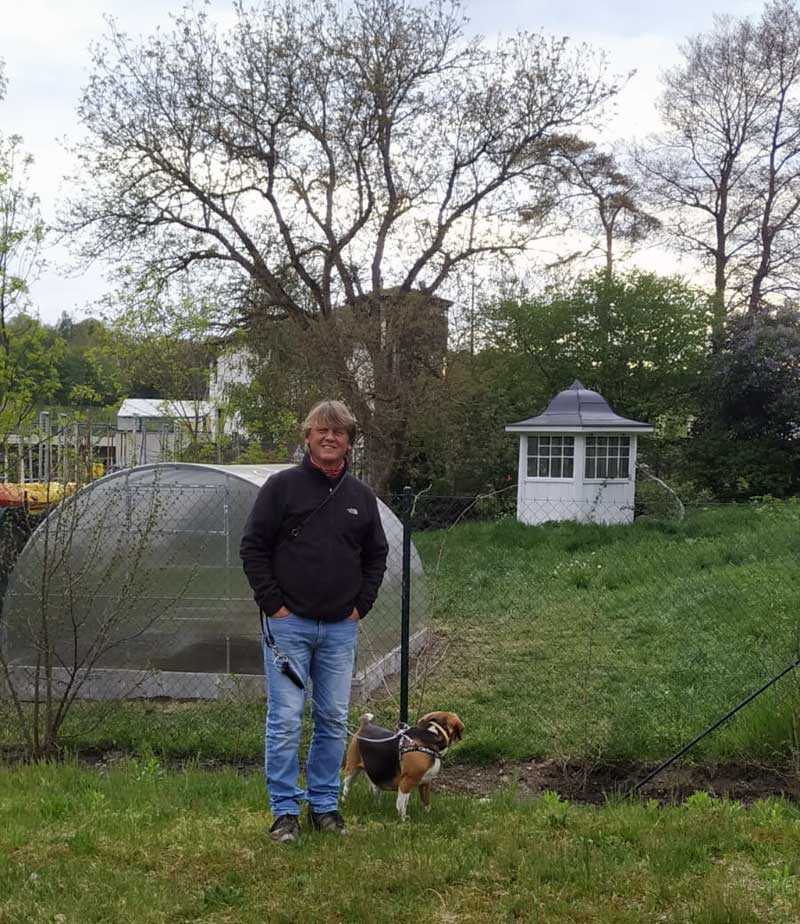
You could say that Prague-based Martin Klimenta is Bohemian in more than one sense of the word. In early March, Martin was skiing at an Austrian resort right as things started to shut down. He narrowly (as in hours to spare) made it back into Czech Republic before the borders sealed up, and has spent his quarantine days in Tynec nad Sazavou, a town with a population just shy of 6000, located about 20 miles outside Prague.
(click image to view larger photo)
He liked it so much he decided to stay on for the foreseeable. Given his locale – a 1928 villa owned by a friend and set on beautiful plot of land on the banks of the Szava River — who wouldn’t? Those of you who have traveled with Martin know he’s a big walker, and he’s also an avid bicyclist who makes the trip over hilly terrain from the village to Prague in about an hour.
(click image to view larger photo)
A teacher by profession, Martin loves to learn new things as much as he enjoys sharing his knowledge with others. During this time he’s become his friend Adriana’s apprentice. Adriana is a woman of many talents — particularly good with her hands: physical therapist, gardener, and certified restorer of furniture and upholstery.
At least two of those skills have piqued Martin’s interests: gardening and antique furniture restoration. He’s gotten handy around the villa’s workshop as he’s perfected the basic tasks of stripping old cloth, nails and joints off chairs, tables, etc. in preparation for the master to bring them back to life.
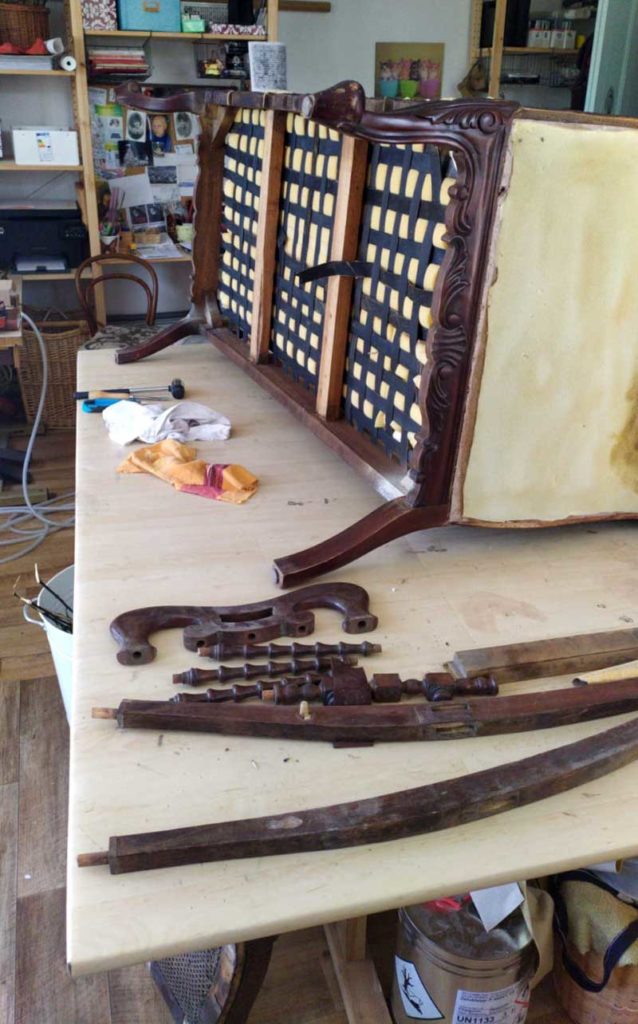
“Together we’ve set up a greenhouse built to last forever thanks to the zinc-coated steel framework material from Russia. As we gradually build our very own ‘garden of Eden’ and impatiently await our first harvest of tomatoes, bell peppers, eggplant, basil, cucumbers, celery, kohlrabi, and radishes, I’m passing the time by continuing to teach myself to play the piano – I’ve recently mastered Beethoven’s “Fur Elise” and have moved on to the Beatles “Let it Be.”
(click image to view larger photo)
While village life is suiting him nicely while he’s taking a temporary break from his usual tour manager duties, he can’t wait to get back to traveling and looks forward to returning to Montenegro, Northern Macedonia and Albania, in particular – some of his favorite Balkan destinations.
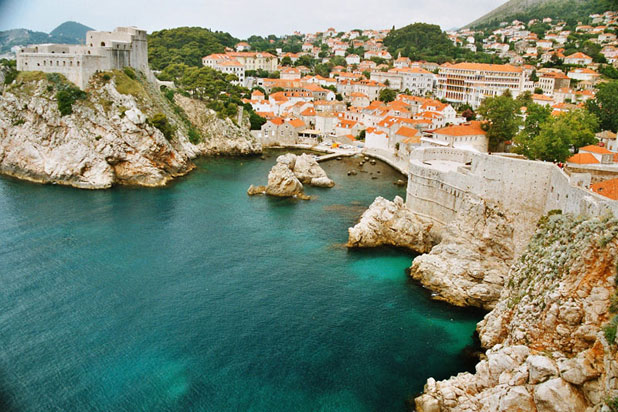
Abdu Samadov
Hails from: Samarkand, Uzbekistan
A very different kind of Ramadan
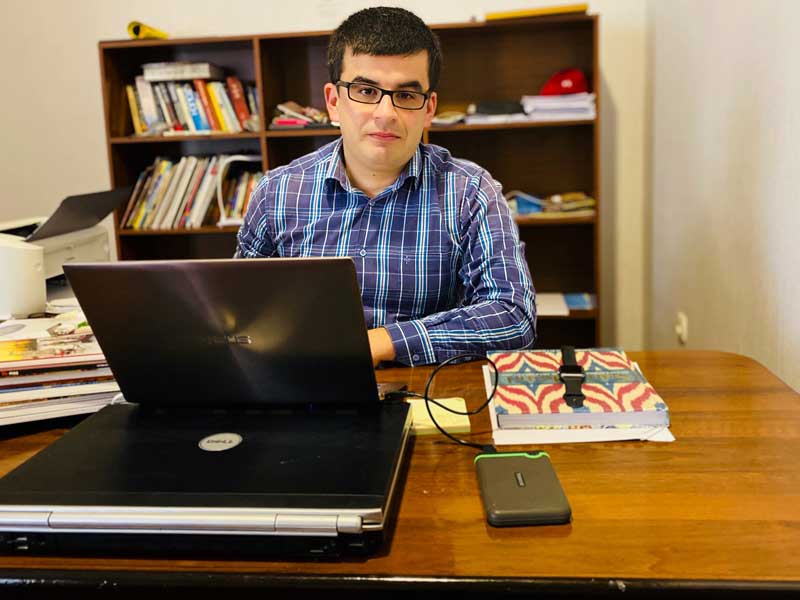
Finding ways to pass the unexpected time turned out not to be hard for Abdu, husband and father of three, as an important Islamic holiday also coincided with the lockdown, Ramadan.
With all nursery, school, universities and public buildings closed to follow quarantine rules throughout Uzbekistan, Abdu and his wife Dilbar, a women’s dress designer also studying accounting, took on the role of educators supplementing national online classes for their children: Ameera, age 10; Diyora, age 9; and Laziz, 5. Abdu and Dilbar focused on Russian and English grammar, reading and mathematics – the girls even registered with Khan Academy to improve their math skills – and Laziz excelled at picking up new vocabulary through watching cartoons.
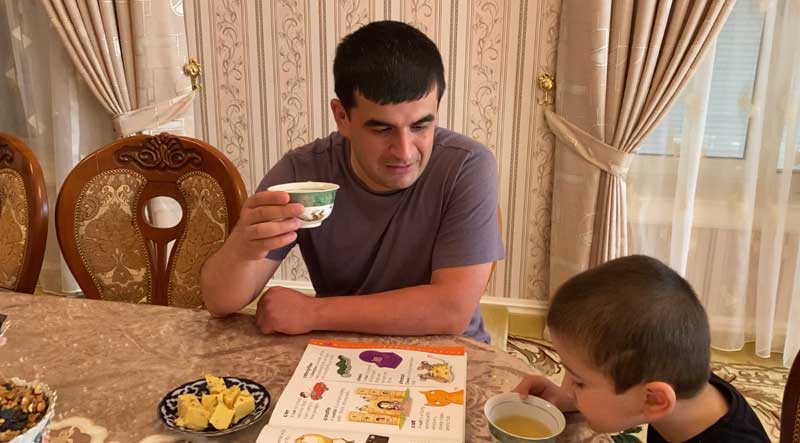
The family, including Abdu’s parents, were also a willing audience for Abdu’s talks on history, culture, and traditions of Uzbekistan which he had prepared for use in his tour guiding days, after poring over books written in English, Russian, Uzbek and Tajik.
“During the holy month of Ramadan, Muslims around the world fast from dawn to dusk. In my city – Samarkand, it means almost 16 hours of the day we abstain from eating or drinking. Ramadan was different this year, as we were not able to visit friends and relatives. Usually during Ramadan we visit our siblings, our teachers, some of the elderly relatives and receive blessings, and this year we could only stay at home and follow policies in place. One person from our family could go to the shop to buy groceries and we are very fortunate to have food on table.
Usually, we visit people less fortunate during Ramadan to provide charity known as Fitr Charity, but this year people could not provide charity directly, and instead relied on the local community center – Mahalla – to do this charitable work on behalf of the community. During Ramadan, when working as tour manager I am generally not able to fast, because in my view it was not possible to fast and function 100 percent. During lock down I was able to follow one of the pillars of my faith more closely.”
(click image to view larger photo)
Being passionate about photography, the opportunity to walk the empty streets and squares typically teeming with locals and visitors, and shoot Samarkand’s empty beauty during these strangely peaceful days was a rare one indeed.
“As a guide I am passionate about inspiring travelers to understand and value the differences they see in my region, so they become storytellers and help our world to come together. I can’t wait for the time I can stroll these streets of Samarkand again together with travelers from the U.S. and to share the cultural traditions of my country, like those in the Backstreets & Bazaars program during Navruz, one of my favorite trips to lead.”
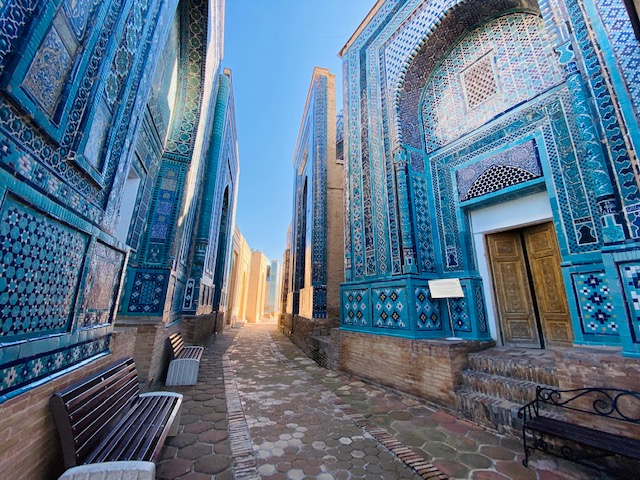
Olga Boyarskaya
Hails from: St. Petersburg, Russia
From Guide to Gardener
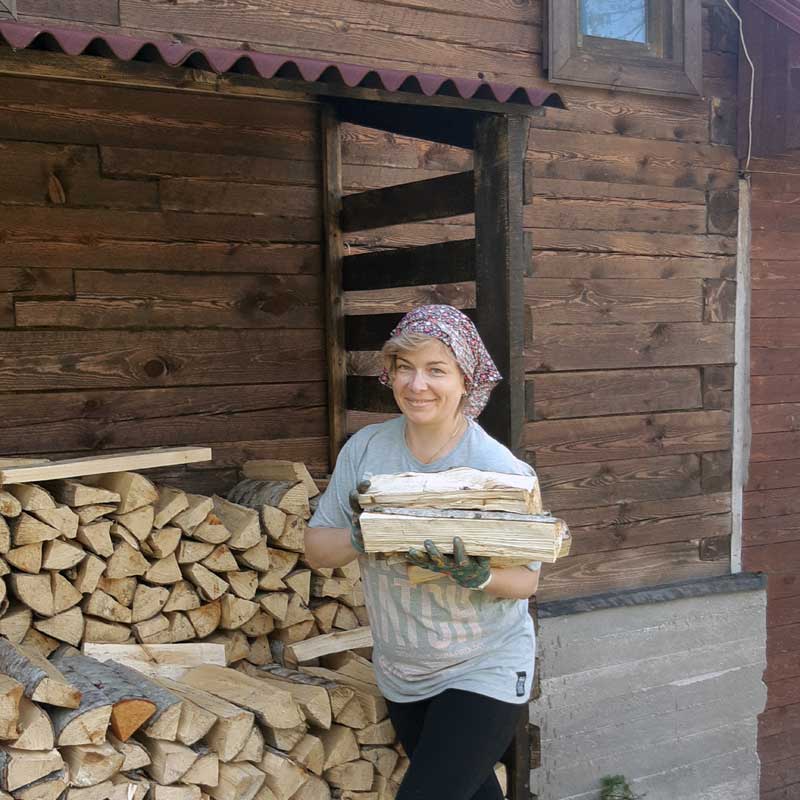
When the stay at home orders started in Russia in the last weeks of March, tour manager Olga Boyarskaya and her husband and son decided to temporarily relocate from their St. Petersburg apartment out to their country house, or dacha, located in the small town of Luga, about 80 miles outside the city.
Olga inherited the 1950-era log cabin from her grandmother. Both Olga’s grandmother and her great-great-grandmother were born in Luga, which remains a coveted area in which to have a dacha. Throughout history, Russian literary and musical greats were drawn to this region known for its favorable climate and pristine nature. Rimsky-Korsakov lived near Luga for 16 years, and inspired by the forests of the region, created his most well-known opera, Snow Maiden; Russian landscape painter Ivan Shishkin frequently worked in the area; as did novelist Vladimir Nabokov; and a bit further on is the estate “Pushkin’s Hills” with the celebrated poet’s grave.
(click image to view larger photo)
The dacha is a cherished Russian cultural institution. A dacha is a summer cabin, somewhere in the countryside, where modern Russians who live and work in big cities escape for relaxation — all the more effective if complete with a steam bath, known as a banya.
“But the dacha is not just a ‘second house,’ says Olga, it’s much more than that for Russians – it’s more like a way of life and you could say it’s even sacred. Given shortages of living space during Soviet times, and with communal flats being the norm for many, the dacha symbolized personal freedom.
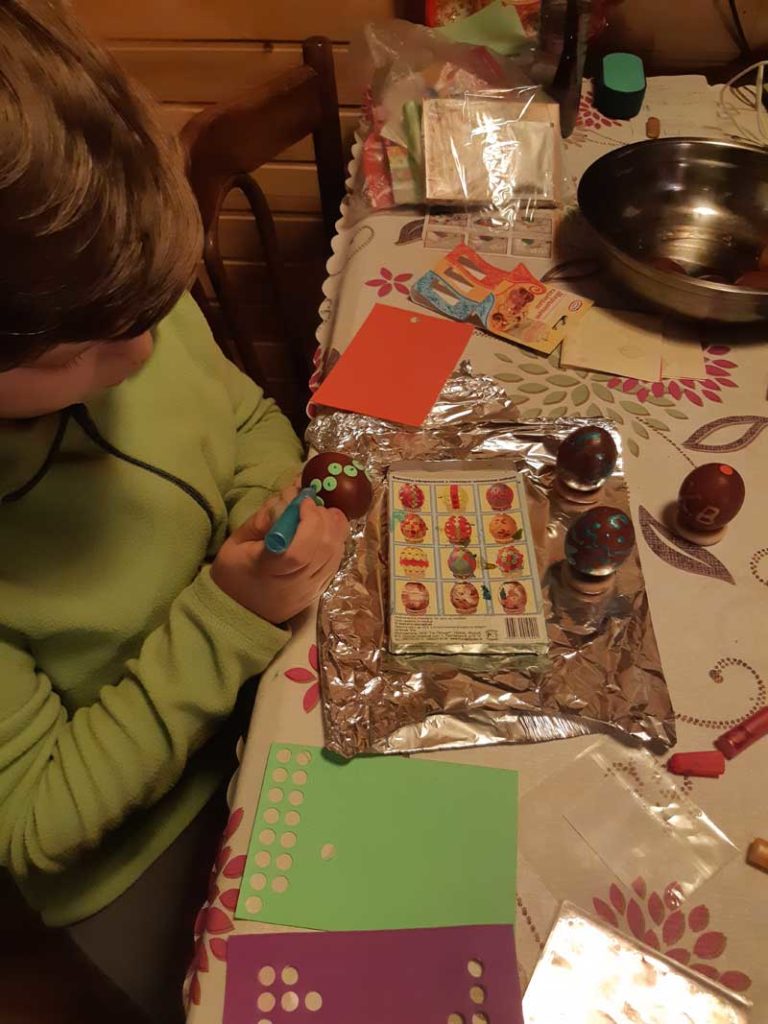
It was also a place to gather privately with friends and family for holidays and special events; important given eating out at restaurants was cost prohibitive. The dacha gardens also supplemented the food supply as everyone could grow their own vegetables.
(click image to view larger photo)
And in summertime, babushkas (grandmothers) would look after the children while parents could work in the city. Maybe there’s a nostalgic connection to the pre-revolutionary estates, but for many Russians, like myself, the dacha helps maintain the soul of the family.”
Olga’s babushka always dreamed Olga would become a gardener and a good dacha keeper – and Olga is proud she has had an opportunity to do so. She also very much looks forward to returning to guiding and travel as soon as she can. She misses traveling to the ancient towns of the Golden Ring outside of Moscow, in particular.
